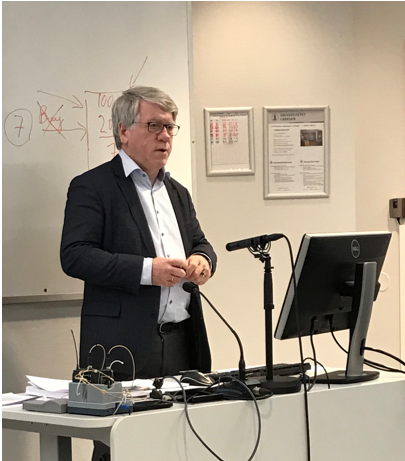An introduction and analysis to the EU-ETS system and how it is working (or not) - Ernst Nordtveit (Faculty of Law)
Ernst Nordtveit, professor at the Faculty of Law, held a presentation for the Energy Lab on November 21. He gave and introduction to and analysis of the EU-ETS system, and how it is working (or not).
Main content
The EU emission trading system (EU-ETS) is a tool for reducing greenhouse gas emissions in the EU countries plus Iceland, Liechtenstein and Norway. It works by the "cap and trade" principle, where a cap is set on the total amount of greenhouse gases that can be emitted by the system. This cap is reduced each year, thus bringing down the total emissions. Within the "cap and trade" system, companies can trade emissions quotas (rights to emit), and at the end of each year every company need enough quotas to cover their emissions.
In the wake of the financial crisis in 2008, there has been a surplus of emissions-quotas on the market. Prices on the quotas have been too low to give strong incentives, and it has been hard to find the balance between measures to avoid "carbon leakage" (when businesses transfer their activities to countries not regulated by the EU-ETS, thus increasing total emissions) and the need for a higher price.
Ernst concluded that the EU-ETS system is working, but that it needs further improvement. Recent proposals to revise phase 4 (2021-2030) will, according to Ernst, help improve the system. In addition, the EU-ETS has served as a model for other countries, heling them to reduce their own greenhouse gas emissions.
Read more in Ernst's presentation below!
